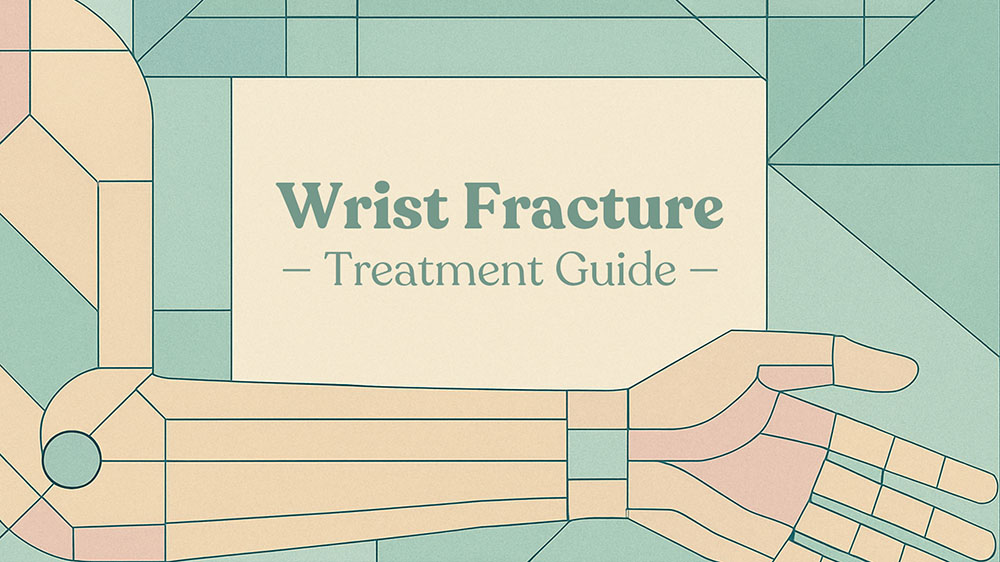Your guide to hand therapy.
Hand therapy is rehab of the hand, wrist, elbow and shoulder.
If you’ve been injured, had a surgery, or have a condition that impacts using your arm, you may benefit from seeing a hand therapist.
In this guide, we’ll begin by helping you find occupational therapists with a focus in hand therapy, as well as certified hand therapists near you. Then we’ll walk you through common hand therapy questions including:
- How to find a hand therapist near me?
- What is hand therapy?
- What are common diagnoses that hand therapists help with?
- What happens at hand therapy?
- When to start hand therapy and how long does it last?
- What can you be doing on your own?
- Who is called a hand therapist?
- Does the hand therapist need to be near you or can you do telehealth?
How to find a hand therapist near me?
In our OT near me directory (below), you can search for occupational therapists who elected hand therapy as a focus area. If the therapist has a “CHT” after their name, they are a certified hand therapist.
Our directory only includes OTs. OTs comprise 87% of certified hand therapists. To find a CHT physical therapist, you can use this directory.
What is hand therapy?
Hand therapy refers to rehabilitation of the upper extremity (specifically the hand, wrist, forearm, elbow and shoulder).
It is a clinical specialty that is practiced by occupational and physical therapists who train to provide exercises, wound care, fabricate custom orthoses as well as ergonomic education. In the case of amputations, hand therapists also help prepare limbs and fingers for prosthetics by shaping the residual limb and desensitizing scar tissue to improve tolerance of prostheses.
The upper extremity is a complex framework of 30 bones, that provide structure for the muscles, blood vessels, nerves and lymphatic structures that enable us to perform so many daily activities. The reasons for needing hand therapy might include surgery, burns, fracture, arthritis and repetitive strain injuries. If you have been injured, had a surgery, or have a condition that impacts using your upper extremity, you may benefit from seeing a hand therapist.
What are some signs that you might need hand therapy?
Although we often think of traumatic injury as the only reason to require a specialist, there are many other conditions that benefit from intervention by a hand therapist.
These include nerve compression syndromes like carpal tunnel, cubital tunnel and radial tunnel. Tingling and numbness in the arm and hand are often dismissed as a nuisance until they begin to impact strength and dexterity. By seeking the attention of a specialist, you can alleviate the symptoms and learn ergonomic principles or adaptive strategies that preserve upper extremity function. Sometimes the right intervention applied at the right time can even defer or negate the need for future surgical intervention.
What are common diagnoses that hand therapists help with?
There are several common diagnoses that hand therapists work with, listed below.
Don’t hesitate to ask the hand therapist if they have experience with your specific condition before booking your evaluation.
We therapists have a tight knit community, so if we don’t have expertise in your condition, we may know someone else to refer you to!
This list is derived from the journal article Hand therapy interventions, outcomes, and diagnoses evaluated over the last 10 years.
- Arthroplasty
- Boutonniere deformity
- Burn
- Carpal tunnel syndrome – See our treatment guide
- Distal radius fracture
- Distal radial fracture
- De Quervain
- Dupuytren
- Edema
- Extensor tendon repair
- Flexor tendon repair
- Gamekeeper thumb
- Golfer’s elbow – See our treatment guide
- Mallet finger
- Nerve repair
- Osteoarthritis
- Rheumatoid arthritis
- Skier thumb
- Swan neck deformity
- Tenolysis
- Tenosynovitis
- Tendonitis
- Tennis elbow- See our treatment guide
- Trigger finger
- Ulnar collateral ligament repair
What happens at hand therapy?
Effective hand therapy treatment is guided by a few factors; the surgeon’s instructions for post-operative care, severity of injury and length of time that symptoms have been present. In cases of post-surgical rehabilitation, the sign of a good hand therapist is someone who reviews operative reports, relevant imaging results such as X-rays/MRIs and contacts your surgical team to ensure a thorough understanding of your case. Since every patient is unique, treatment sessions are as well.
New patients are evaluated to assess range of motion, swelling, pain, grip strength/strength, dexterity and when relevant, peripheral nerve function. Treatment goals are then set based on the patient’s specific functional deficits and desires for enhanced participation in work or play tasks.
From then on, each session is geared toward achieving your goals. Below is a list of types of hand therapy interventions. This list is not exhaustive and is partially derived from Hand therapy interventions, outcomes, and diagnoses evaluated over the last 10 years.
Education
- ADL/adaptive/assistive/ergonomic device training
- Compensatory techniques
- Energy conservation
- Ergonomic and activity modification
- Home exercise program
- Joint protection
- Nutrition instruction
- Orthotic/prosthetic training
- Patient/family education
- Wellness education
Exercise
- Range of motion
- Tendon glides
- Strengthening
Activity
- Functional activity
- Therapeutic activity
- Neuromuscular education
- Work hardening
- Work conditioning
- Handwriting
Manual techniques
- Manual therapy
- Joint mobilization
- Nerve mobilization
- Edema mobilization
- Myofascial release
- Therapeutic massage
- Scar management
- Hypertrophic/keloid management
- Pressure therapy
- Scar mobilization/massage techniques
- Skin management
Modalities
- Contrast bath
- Cryotherapy
- Diathermy
- Fluidotherapy
- Hot packs
- Iontophoresis
- Laser/light therapy
- NMES/electrical stimulation
- Paraffin
- Phonophoresis
- TENS
- Ultrasound
- Whirlpool
Orthosis/prosthetics
- Orthotic design/selection/fitting/fabrication
- Fabrication of temporary prosthetic for functional activities
Miscellaneous
- Biofeedback
- Compression therapy
- Desensitization
- Sensory re-education
- Taping techniques
- Wound care management
- Design/selection of adaptive/assistive/ergonomic devices
When to start hand therapy and how long does it last?
The best time to start hand therapy is as close to the time of injury or surgery as possible. During this phase your brain is learning new habits to cope with your injury/condition—so it is an important window of opportunity to make sure your hand heals in the best way possible.
This acute phase is typically 0 to 8 weeks after the incident. When possible, it is helpful to see someone over the full course of this phase to ensure that the correct treatment is applied at the best time. For example, bones usually take 4-6 weeks to heal after a fracture. Therefore it is best to defer strengthening or passive stretching until there is enough structural integrity to receive maximum benefit.
Depending on the severity, your injury may continue to heal for up to a year, and while active treatment will not be required throughout this period, hand therapists remain available to you to navigate any changes/questions as they arise. You can also reach out to your surgical team with concerns long after the initial procedure date.
What can you be doing on your own?
There are many other resources out there and you are encouraged to ask your hand therapist at the first visit, or even when scheduling what you can be doing from home to aid in the therapy process. One source utilized by both therapists and patients is Virtual Hand Care. However, it is always best to seek the guidance of a hand therapist regarding appropriate exercises for your injury or diagnosis.
Who is called a hand therapist?
Hand therapists can be either occupational therapists or physical therapists. Therapists who accumulate 4000 hours of directly treating the upper extremity, 3 years minimum of practice and pass the Hand Therapy Certification Commision’s exam earn the title of Certified Hand Therapist (CHT).
Does your therapist need to be a CHT?
Hand surgeons usually prefer that their patients are treated either by a CHT or a therapist who is actively working toward earning that credential. Due to the complexity of the upper extremity, clinicians who choose to focus on this area of practice will apply rigorous protocols of bone, tendon, nerve and ligament healing to each exercise they provide and custom orthosis they fabricate. By seeking out a CHT or a “CHT-track” therapist (someone actively working toward qualifying for and passing the exam) you can have the assurance that they possess extensive experience and expertise in hand therapy.
Should your hand therapist be an OT or PT?
All hand therapists, OT and PT alike, are expected to have upper extremity rehabilitation-specific expertise. A good rule of thumb is to ask questions, research clinicians in your area and then armed with information go with your instincts regarding which particular therapist is right for you. Depending on the level of injury, you will be spending a LOT of time with a hand therapist; sessions are often 45 to 60 minutes long, 1-3 times per week. If you have had surgery, ask your surgeon for hand therapist recommendations.
How do occupational and physical therapists become hand therapists?
Mentorships, fellowships and certificate programs as well as hands-on experience are the best ways to develop the expertise that hand therapy requires.
- The American Occupational Therapy Association (AOTA) has a list of recognized fellowships.
- The American Society of Hand Therapists (ASHT) has a list of post-professional programs.
- ASHT has a free volunteer-based mentoring program.
Does the hand therapist need to be near you or can you do telehealth?
Many hand therapists have begun offering telehealth. (I’ve personally done hand therapy over video, and it was awesome!)
Some therapists even offer evaluations in person, with the option to do telehealth sessions.
In the United States, our OT and PT licenses tend to be state specific (this is slowly changing). So you may still have to find a therapist in your state, even if you are doing telehealth.
Conclusion
The hand is a remarkable part of our body, and you do not want to delay it if it is in need of rehabilitation. Luckily, there are highly trained therapists in almost every community to help you navigate recovery, and we hope this post has helped you understand which hand therapist is right for you!
References:
Forro SD, Munjal A, Lowe JB. Anatomy, Shoulder and Upper Limb, Arm Structure and Function. [Updated 2023 July 25]. In: StatPearls [Internet]. Treasure Island (FL): StatPearls Publishing; 2024 Jan-.
Takata,Sandy C. Wade, Emily T, Roll, Shawn C. (2019). Hand therapy Interventions, outcomes, and diagnoses evaluated over the last 10 years: A mapping review linking research to practice. Journal of Hand Therapy,Volume 32, Issue 1,Pages 1-9,ISSN 0894-1130,






